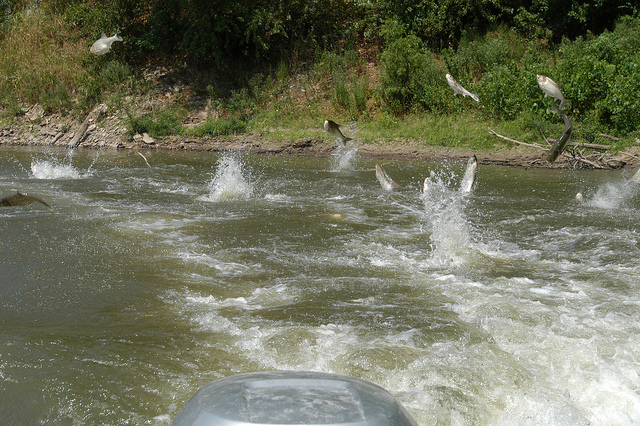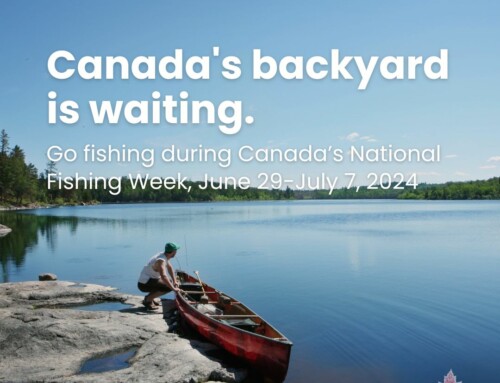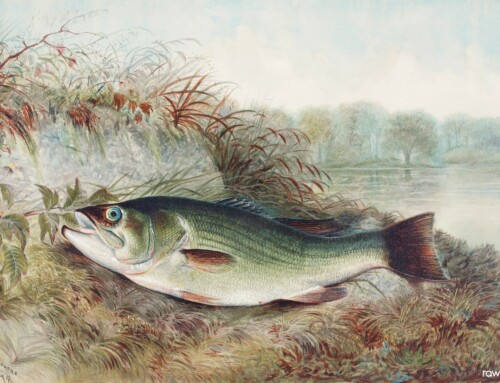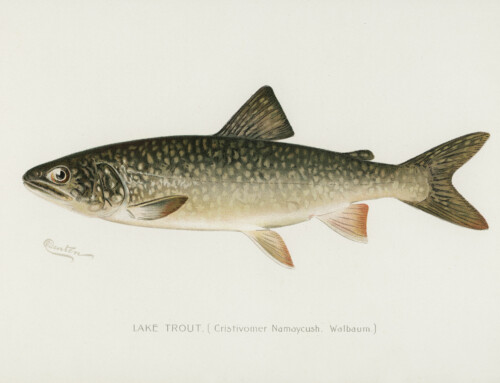Becky Cudmore heads the Asian carp program for Fisheries and Oceans Canada. She runs the lab at the Canada Centre for Inland Waters in Burlington, which has been ground zero for the effort to keep Asian carp out of local waters.
Originally Published by The Toronto Star, September 28, 2015
There should be an Asian Carp CSI.
That’s Becky Cudmore’s best carp joke. If the show were ever cast, its star would have to take acting notes from Cudmore, because that is the role she’s playing now: the explainer, understander and, ultimately, the slayer of Asian carp, an invasive species that has shown up in local waters.
Weeks before two fat Asian carp were discovered in July near Toronto’s waterfront, Cudmore knew 2015 would be the summer of the carp.
It wasn’t a hunch or a premonition.
There was evidence of reproduction of grass carp — part of the Asian carp family — in the Sandusky River near Lake Erie. And more grass carp were being found in U.S. waters.
In addition to the two carp found in Tommy Thompson Park in July, one was found at Jordan Harbour in St. Catharines in August and another three in the Toronto Island harbour in September. In the final days of summer, a grass carp was found in the Bay of Quinte and another in Lake Erie, near Point Pelee.
The summer’s final tally? Eight.
“It was so quiet for a while,” says Cudmore, who heads the Asian carp program for Fisheries and Oceans Canada.
She’s sitting in her tiny office tucked in a corner of the labyrinth that is the Canada Centre for Inland Waters building in Burlington, where she runs the laboratory. This summer went by in a blur of hunting, dissecting, shipping eyeballs and other parts to the U.S. and playing detective to determine how the fish got into Canada.
When she talks of being out on the water, her face lights up. She looks relaxed, in control. She dislikes Asian carp but admires their tenacity. She clearly respects her opponent — even if she already thinks she has them defeated. For now.
Cudmore is confident there is no established population of the fish at either Tommy Thompson Park or in Toronto Island harbour.
Here’s her theory: grass carp don’t like deep water; they like to stay near the shore and they like to school. When crews were hunting for more, they found none. Cudmore says that if there were a population, the fish that were caught wouldn’t have been roughly the same age. As in a family, there would have been babies, young adults and adults.
When fish release eggs or sperm, they scrape along the bottom and their bellies have telltale signs. Like a coroner, Cudmore examined the bodies. And found nothing.
She talks as if she has known invasive species all her life. In a way, she has. Growing up between Goderich and Sauble Beach in Ontario, she was always near water, always fishing or kayaking.
In 1991, she chose Trent University for her undergraduate degree because a river ran through the campus. “I figured it would be the best way to study aquatic systems,” she says. And in her third year, when she was 20, she designed her own course on invasive microscopic animals.
Then in 1999, she landed at Fisheries and Oceans. She remembers her supervisor asking how she saw her career unfolding. “I said I loved being a public servant, but I wanted to do some work in invasive species. He said, well, we don’t do a lot of that here.”
Now, there’s a war on Asian carp.
Native to China, the fish were introduced to the U.S. to tackle aquatic weeds in the 1970s. Highly invasive, they include silver, bighead, grass and black carp varieties. They have since infiltrated waterways throughout the Midwest, eating like gluttons and multiplying like guppies. They can grow up to a metre in length and weigh more than 40 kilograms. Silver carp can jump up to three metres high.
On both sides of the border, there is agreement that if the carp find a path into the Great Lakes, commercial and recreational fishing could be decimated and ecosystems devastated. It could cost billions.
The Great Lakes cover almost a quarter of a million square kilometres. It’s impossible for any one agency to keep out Asian carp.
As a result, there is tremendous co-operation, not just between the U.S. and Canada, but among the three levels of Canadian government. Cudmore meets regularly with staff at the Toronto and Region Conservation Authority (TRCA) and the Ministry of Natural Resources.
The Asian carp program Cudmore heads includes assessing and inspecting high-risk waterways.
Her home is the lab, built after $17.5 million in federal spending, announced in 2012. Cudmore and her team can test water and fish samples rather than shipping them to the U.S. The gleaming facility is about half the size of a squash court. There are mounted carp on one wall, and some silver and bighead carp — long dead — kept in buckets, so students can learn to identify them.
It’s here that the recently discovered grass carp were brought, weighed and photographed. Then they were cut up before being shipped to the U.S.
Cudmore has two hypotheses about how the creatures ended up here: they were smuggled in either as food or for agricultural purposes. (Grass carp are good at cleaning up ponds.) “Maybe they were released years ago and they grew up here,” she says.
But that theory has a hole, she knows. TRCA has been monitoring that area and the fish would have been detected. She wonders, then, if they were released recently.
It won’t be a mystery for long.
Each body of water has its own chemical composition, an identifying feature. Fish, in their ear bones, have “rings,” which can be tested for their chemical composition. The two can be compared and the fish traced to the water they have been in.
That is what is happening to the eight grass carp right now.
When the results come back, Cudmore will know where the fish spent each year of their life.
What she knows for sure is that all eight were fat. And if those fish have friends out there, they’re getting fat, too. Cudmore knows they have to be found, stopped and killed.
“There are beautiful wetlands out there,” she says. “Asian carp will ruin them.”
Choking the carp
Less than 80 kilometres from the dazzling blue waters of Lake Michigan is the historic Brandon Lock and Dam in Joliet, Ill., with structures dating back to the early 1930s. It’s a picturesque and well-known fishing spot.
It’s also poised to become the latest battleground in the war on Asian carp: a report by the U.S. Army Corps of Engineers identifies the lock and dam site as a “choke point,” blocking the carps’ path to the Great Lakes.
“I think we have a pretty solid battle plan,” says Mike Weimer, the Buffalo-based chair of the Asian Carp Regional Coordinating Committee. “This will go a long way in fortifying the Great Lakes.”
- Why Brandon Lock and Dam?
It is considered a strategic location because after this point, the waterways branch out. This is a single point of control, says Leon Carl of the U.S. Geological Survey.
The site is about eight kilometres downstream from the electric barriers in the shipping canal that the U.S. Army Corps of Engineers depends on to prevent the aggressive carp from reaching Lake Michigan. When fish try to pass through the electric barrier, they get enough of a shock to make them turn around. But there have been recent reports that fish — not identified as carp — have swum through.
“The dam is also higher . . . the fish can’t go up and down and around the lock,” says Carl.
- What will happen at this site?
It isn’t clear yet, but the Army Corps of Engineers, in a report, talked about adding electric barriers to the lock and dam complex. It is also researching technologies that would repel carp. Deploying underwater sound cannons and carbon dioxide bubble screens are among the options. The site could also be home to a new lock where treated water would cleanse vessels of floating plants, spores and fish eggs.
- When will it happen?
Legislation has been proposed in the U.S. Congress. Called the Defending our Great Lakes Act, it will give federal agencies broad authority to take immediate actions to stop the spread of carp and other invasive species.
- Will it work?
It’s not a permanent solution, but a concentration of projects could be a better defence for a longer time. A study by the University of Notre Dame noted that if a combination of technologies such as electric barriers, sound cannons and CO2 bubble screens were used, 75 to 95 per cent of Asian carp could be kept out of Lake Michigan.
“It’s a foundational part of our strategy to protect the Great Lakes,” says Weimer. “It buys us time for a permanent solution.”
- What is the permanent solution?
The hydrological separation of the Great Lakes and the Mississippi River Basin would cost about $18 billion and would involve closing the connection created by the Chicago Area Waterway System (CAWS), a 160-kilometre network of four rivers and two canals that connect Lake Michigan with the Mississippi River. The waterway system is considered the most likely path for invasive species to move between the two major watersheds. The idea has encountered resistance in Congress.
- Who is opposing it?
The biggest opponent is the transportation industry, which ships about 15 million tonnes of commodities through the waterways every year. The U.S. Army Corps of Engineers study estimated that the hydrological separation could cost the commercial cargo industry between $210 million and $250 million (U.S.) annually. A complete separation would take 25 years to construct.
Harmful hitchhikers
The Great Lakes is home to dozens of non-native species; some have been more destructive than others. Experts on both sides of the border largely agree these are the worst of the bunch:
- Zebra mussels: The size of a fingernail, zebra mussels are native to the Caspian Sea region but are now found throughout the Great Lakes, Lake St. Clair, the St. Lawrence River and the Mississippi River watershed. It is believed they were introduced in ballast water in the late 1980s. Zebra mussels reproduce rapidly, threaten native fish and filter algae, which is food for native microscopic organisms.
- Quagga mussels: They may be the least known but are as destructive as their more famous zebra mussel cousins. Native to Ukraine, quagga mussels were discovered in the Great Lakes region in the late 1980s. What makes them primarily unwelcome is that they remove substantial amounts of phytoplankton from the water, therefore altering the food web for native species.
- Round goby: A small, bottom-dwelling invasive fish, the round goby is native to eastern Europe. First found in North America in 1990 in the St. Clair River, they are also believed to have arrived in ballast water. The goby has now spread to all five Great Lakes. They are aggressive eaters and have reduced populations of sport fish by eating their eggs and young. Goby also breed quickly.
- Spiny waterflea: Tiny crustaceans, they threaten ecosystems and fishing by competing with native fish for food. Native to Eurasia, they arrived in ballast water and were first discovered in Lake Ontario in 1982; they have since spread to all the Great Lakes and some inland lakes. Spiny waterflea tend to clog fishing rods, damage a reel’s drag system and prevent fish from landing.
Photo courtesy of Asian Carp Regional Coordinating Committee.







